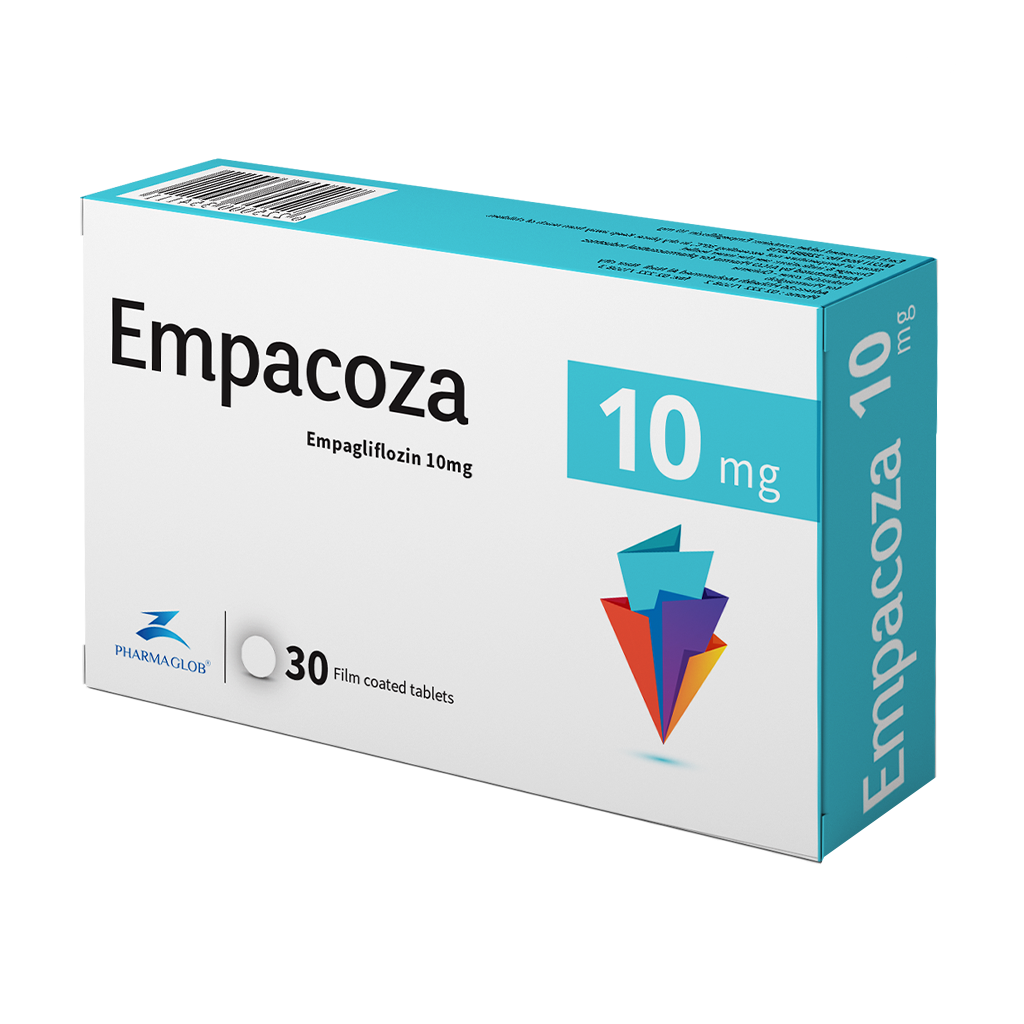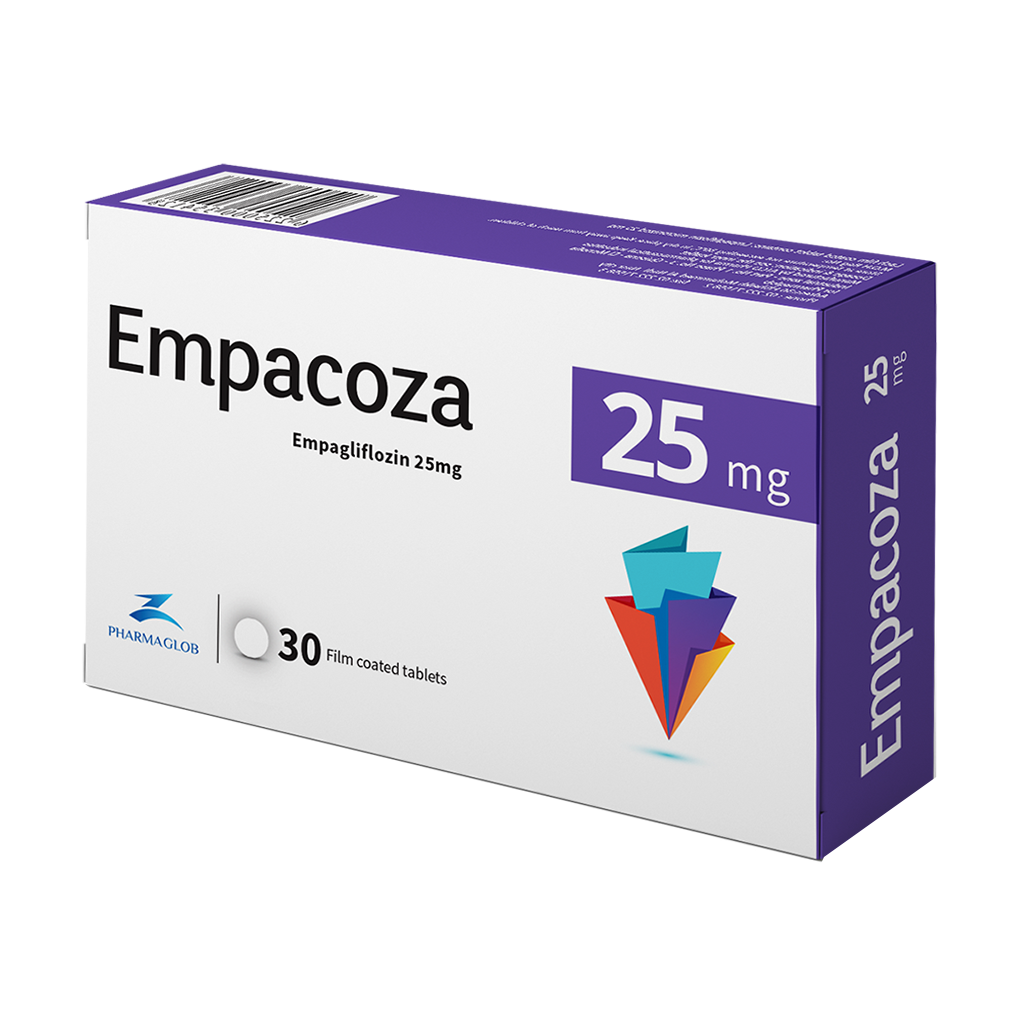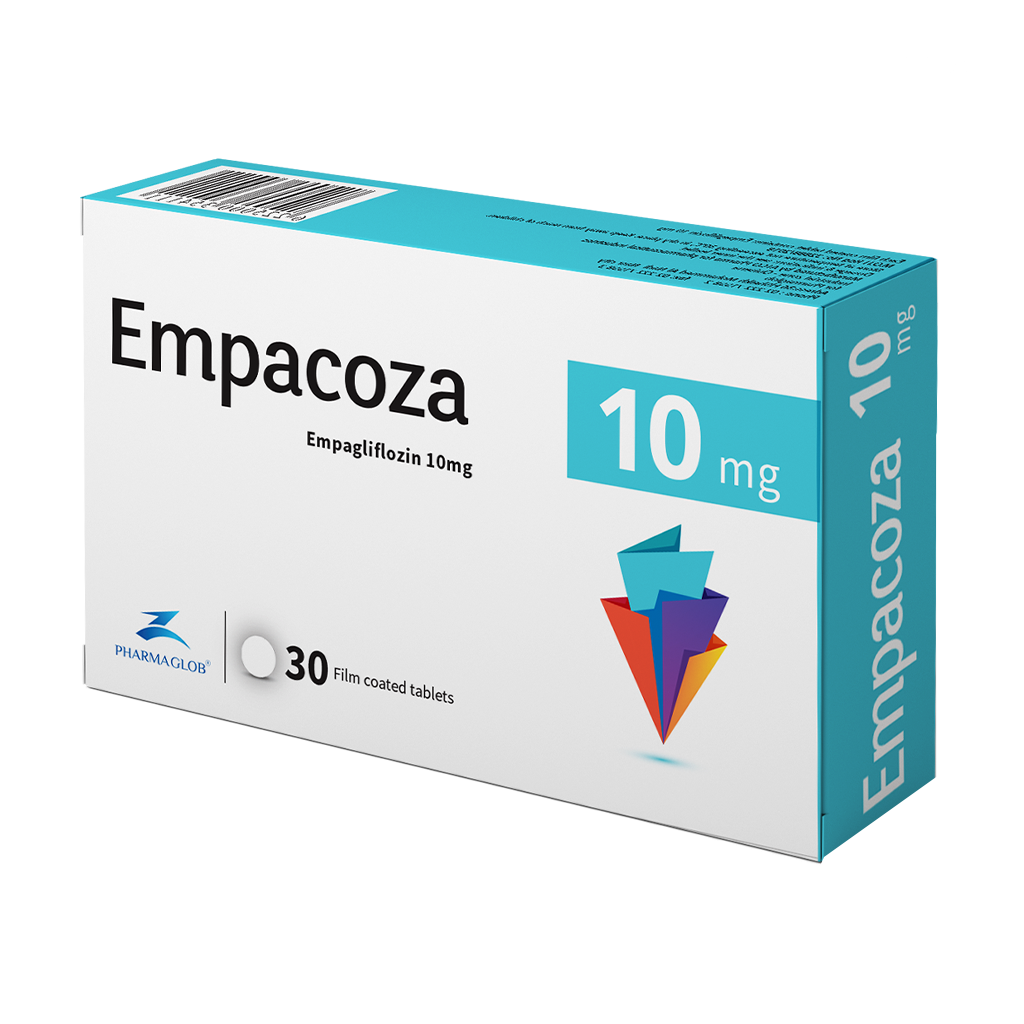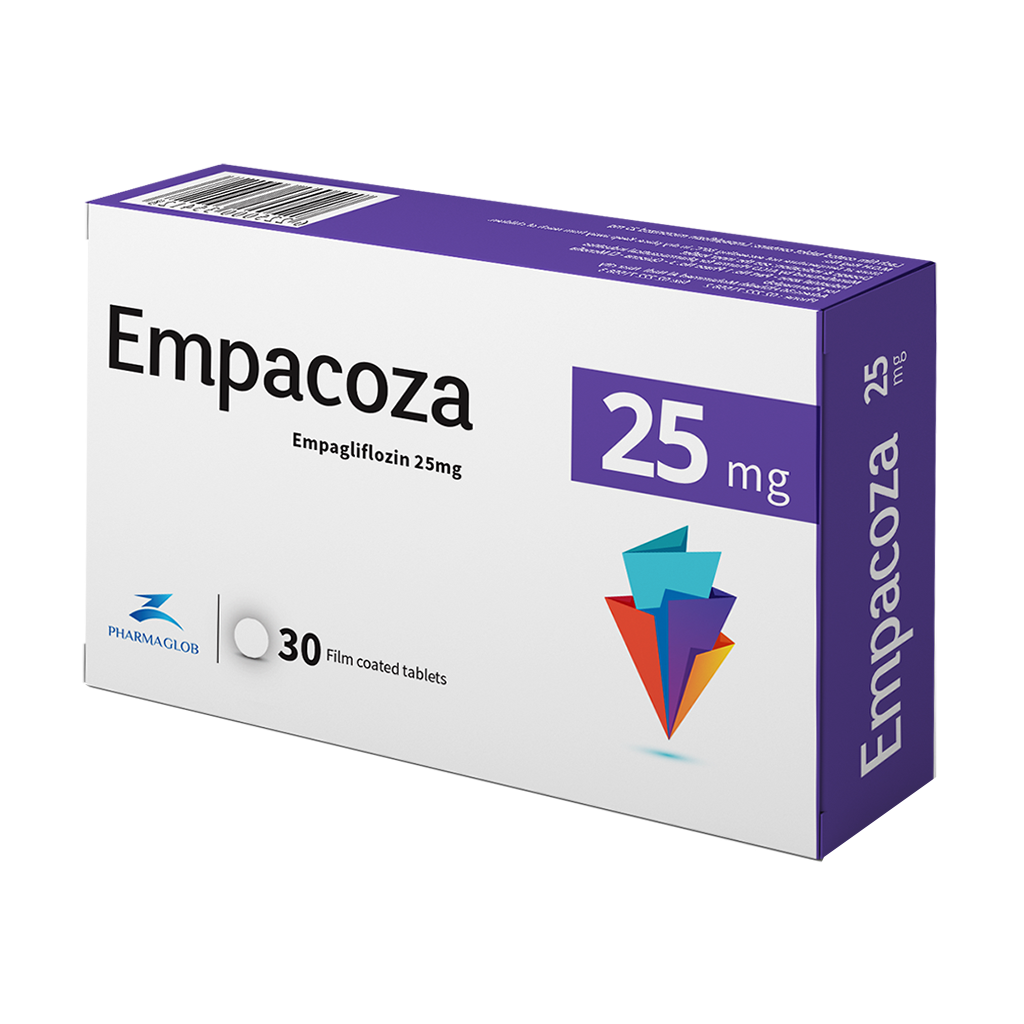



Empacoza Tablet
Pharmaceutical
Product Details:
- Active: Empagliflozin
- Pack of 30 tablet
- Form: Tablet
- Concentration: 10mg , 25mg
- Speciality: All Specialities, Endocrinology & Metabolic, Cardiovascular, Nephrology




Each Empacoza 10mg tablet contains: empagliflozin................................................ 10 mg.
Each Empacoza 25mg tablet contains: empagliflozin................................................ 25 mg.
Empacoza 10mg Tablets: Box containing 3 blisters of 10 tablets each.
Empacoza 25mg Tablets: Box containing 3 blisters of 10 tablets each.
36 Al Sheikh Mohammed Al Nadi St., Off Mostafa El Nahaas St. 6th District. Nasr City, Cairo, Egypt.
